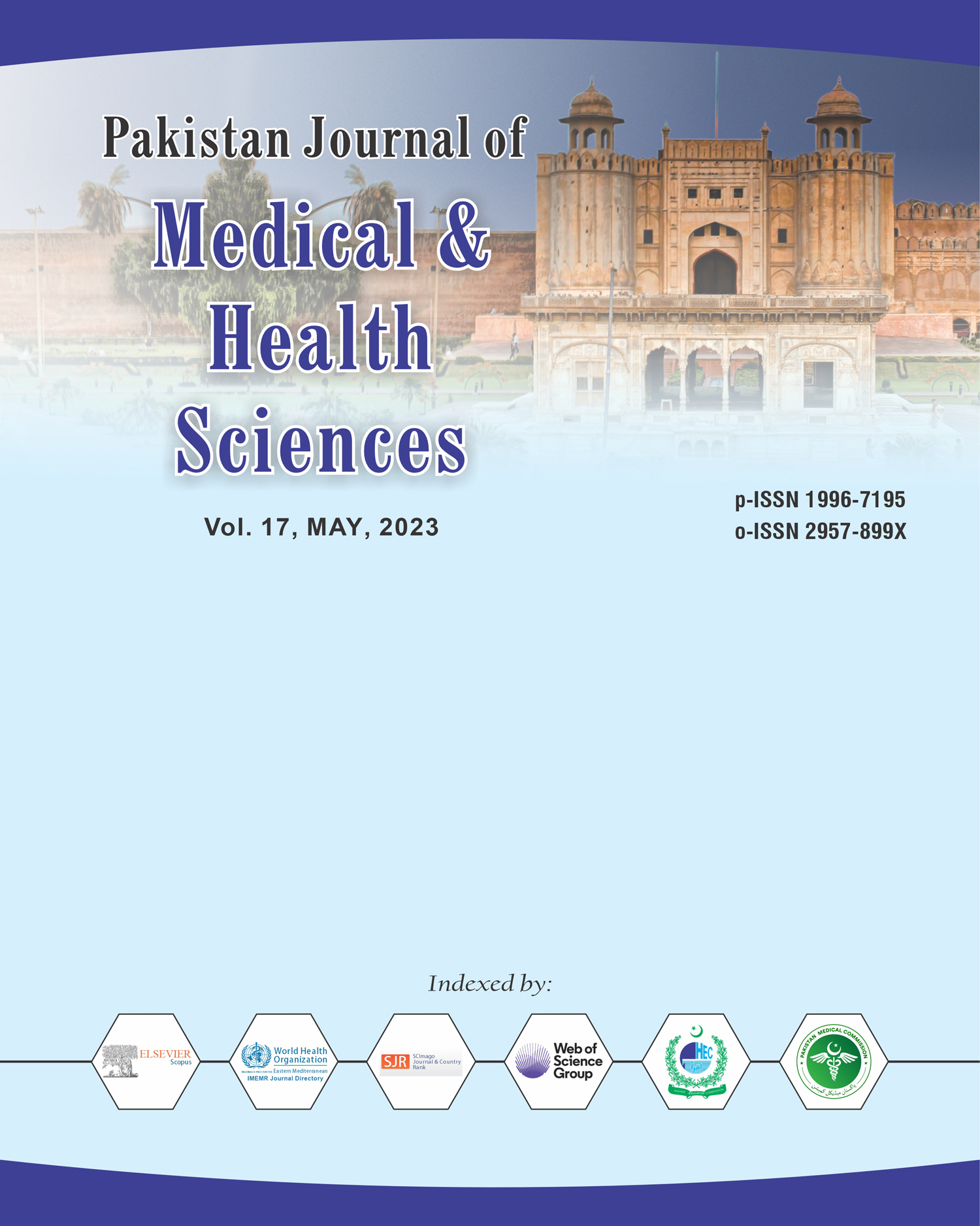Postpartum Haemorrhage and B-Lynch Suture Management in a District Head Quarter Hospital: A Cross-Sectional Descriptive Study
DOI:
https://doi.org/10.53350/pjmhs2023175727Abstract
Objective: The purpose of this study was to determine how often B-Lynch suture treatment was among postpartum hemorrhage patients in a tertiary care facility.
Study Design: A Cross-Sectional Descriptive Study
Methods: This study was conducted at Department of Gynecology and Obstetrics DHQ Teaching Hospital Mardan during may 2022 to February 2023. Total 40 patients of age 18-40 years were presented in this study. All patients who suffered from postpartum hemorrhage throughout that period were included in the study. Patients with bleeding disorders, traumatic postpartum hemorrhage, retained placenta fragments, congenital anomalies, disseminated intravascular coagulation, and entire placenta previa/accreta were not included in the study.
Results: Among all, majority patients 18 (45%) had age 26-30 years. The mean gestational age was 35.14 weeks and the mean birth weight of the baby was 3.45 kg. B-Lynch suture management was done in 14 (35%) cases. 2 (5%) were underwent for cesarean hysterectomy and 38 (95%) cases had uterus salvage.
Conclusion: The addition of B-Lynch suture to the treatment of uterotonic-resistant persistent atonic primary postpartum hemorrhage can save a woman's life and preserve her future fertility.
Keywords: postpartum hemorrhage, B Lynch Suture, cesarean section
Downloads
How to Cite
Issue
Section
License
Copyright (c) 2023 Sajida Begum, Rosemina, Komal Zahra, Navera Ashraf, Mubarra Aqeel, Asia Raza

This work is licensed under a Creative Commons Attribution 4.0 International License.


